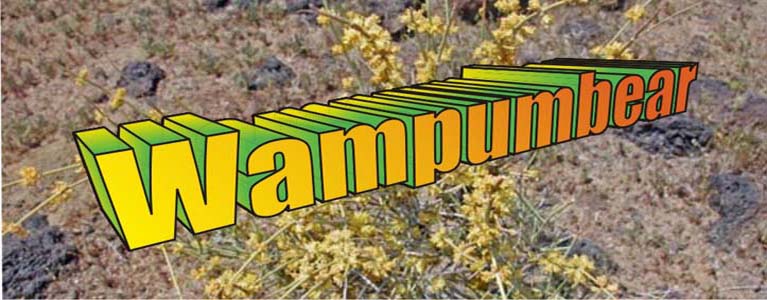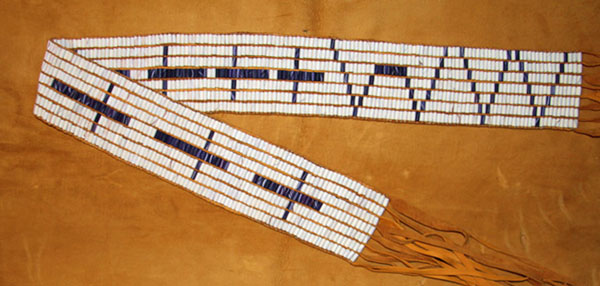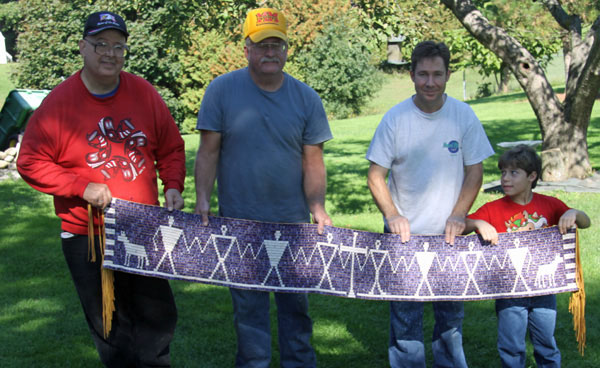 |
 |
Photographs (left to right): Yucca; Ephedra (Mormon Tea); Cream Cups; all photo Ridgecrest region, California
Wampum Belt Archive
Caughnawaga Belt

Original (Courtesy NYSM E-37423)

Reproduction (R. D. Hamell)
Original Size: |
Length: 31.6 inches. Width: 2.2 inches. Rows wide: 7. |
Reproduction: |
Beaded length: 39.5 inches. Width:
3.25. inches. Total length with fringe: 63.5 inches. |
Beads: |
Rows: 220 by 7 beads wide.
Total 1,540 beads. |
Materials: |
Warp: Leather.
Weave: Artificial Sinew. |
Description:
This is a white belt strung on twine thongs. It carries a series of seven purple crosses along its length with a purple zigzag pattern at one end.
Donaldson alluded to this belt in 1890 (Beauchamp, '01, p. 415) as embodying "the pledge of seven Canadian 'Christianized' nations to abandon their crooked ways and keep an honest peace." In 1886 Thomas Webster (Beauchamp, '01, p. 415) called it a "St Regis tribe belt, given to mark their submission to the power of the Six Nations, with a promise of peace." According to A. C. Parker, it records the secession of the St Regis and Caughnawaga Indians from the League and their removal to Canada; interpreting it as meaning, "Their path is not straight, they have forsaken the law and gone to the land of the cross."
"Some interpret this is a record belt that shows seven Nations who had left the Great Law and the Confederacy and embraced the crooked line of the Roman Catholic in Canada, who then gave this belt to the Five Nations along with their pledge to abandon their crooked ways and return to the Great Peace" (Bardeau, 2011).
'Burying the Hatchet Belt, Mohawk Wolf Belt, and this belt have been associated with the Great Peace Council held at Kahnawake in Montreal ending the French and Indian War ca 1760. (Bonaparte, 2012).
 |
 |
Stolle, Nickolaus (2016): Purchased by the institution in 1898, acquired by Paige Richmand from the Onondaga Nation the same year. Described by Donaldson in 1886. Repatriated in 1989.Reference:Bardeau, Phyllis Eileen Wms. 2011. Definitive Seneca: It's In The Word. Jaré Cardinal, editor. Seneca-Iroquois Museum Publisher, Salamanca, New York, 443pp.Bonaparte, Darren. 2012. Personal Communications.Also see Wampum Chronicles: http://www.wampumchronicles.com/Clarke, Noah T.
1931 New York State Museum Bulletin No. 288.Stolle, Nickolaus. 2016. Talking Beads: The history of wampum as a value and knowledge bearer, from its very first beginnings until today. Hamburg, Germany. ISSN 1437-7837
 |
 |
 |
 |
 |
 |
 |
 |
|---|